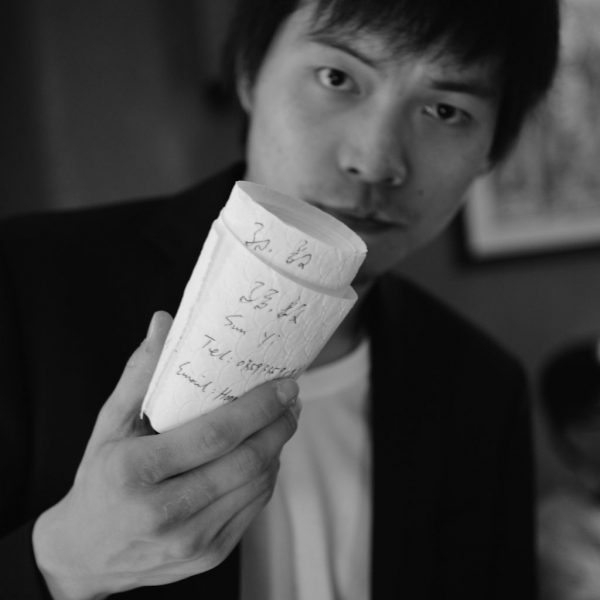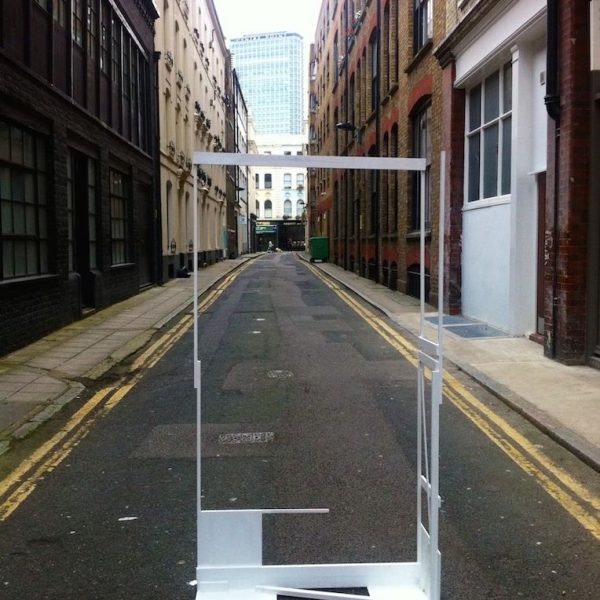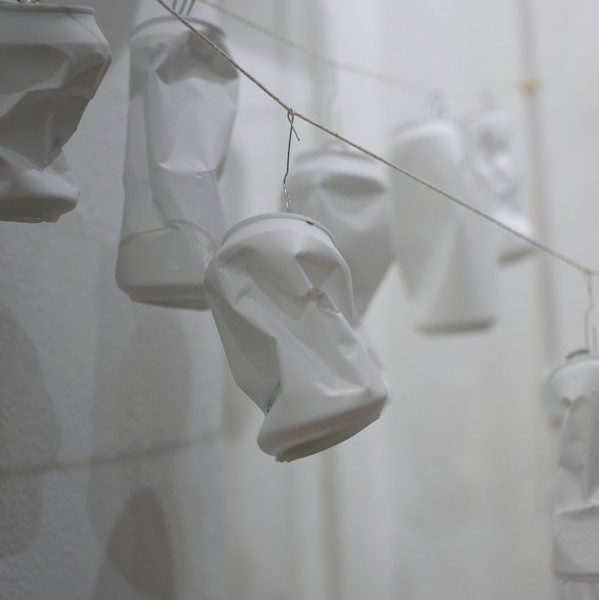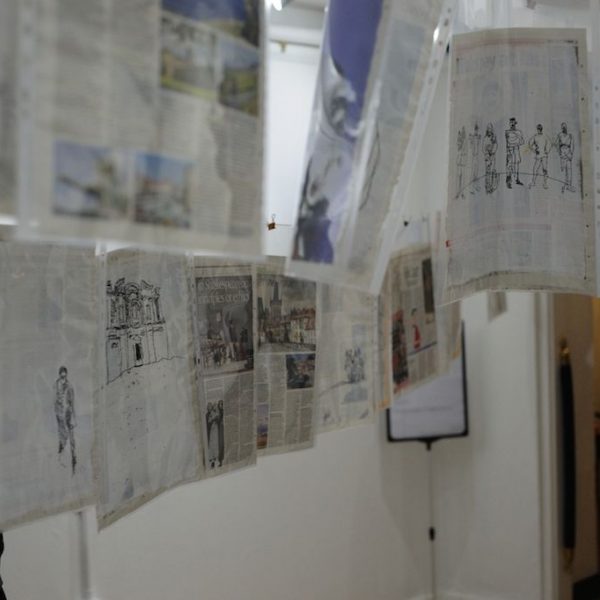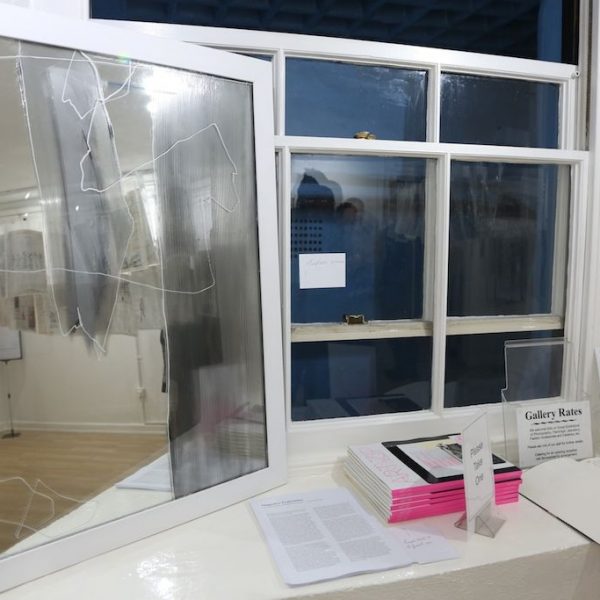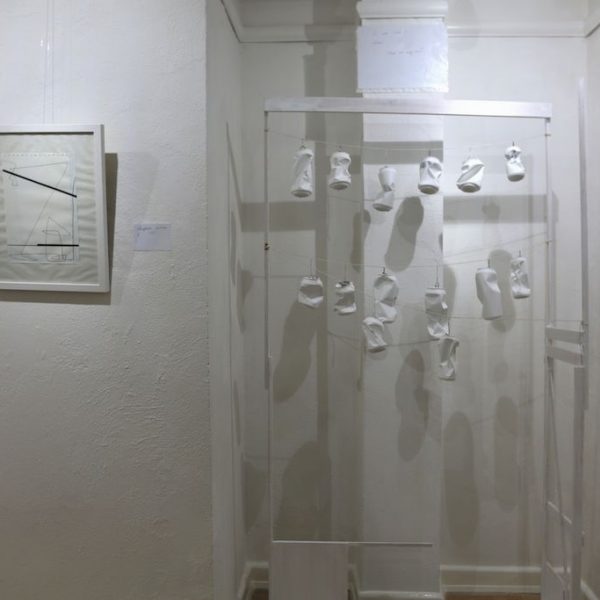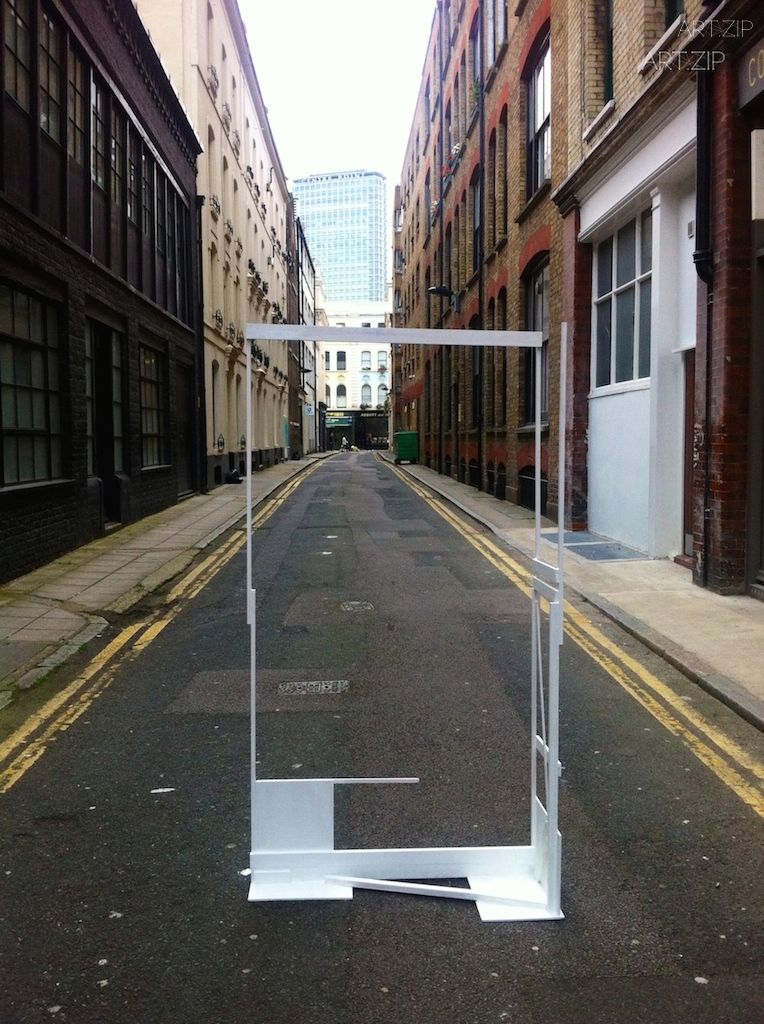
问问自己每天都做了什么,是每天循规蹈矩的活着,还是偶尔也能从循规蹈矩中挖掘出一些趣味儿。
平日里,喝完的汽水罐捏了随手就丢进垃圾桶,看完的报纸集一堆也就称斤卖了, 好像这是我们一出生就既定的习惯。而打破这种习惯的,将一种习惯转换成另一种新的习惯,这就是艺术家孙毅在做的事。
他用生活中最常见的小物——易拉罐和报纸——练习每日的必修课程,即是对艺术家身份的自我说服。其实每位艺术家都会用不同的媒介载体来表达他们的思想,重点不在于用什么素材,而在于表达。在(Can Series)和(Newspaper Series<copy>)中,孙毅探讨了一连串的关系论:
艺术家与艺术家本身的关系
你是艺术家与艺术家的你的关系
人和物的关系
物与物的关系
人与人的关系
人与社会的关系
……
物无非彼,物无非是(庄子),往往我们想要的总在我们前进方向的背面。这种关系论并没有赏味期限,一听易拉罐和一张报纸,他就可以在每日的重复而又不重复中无限不循环下去。而在他的另一个系列(Sleepless)中,他也是用最普通的纸张与笔描绘自身当前的状态——无眠。
有问他关于此次展览的期待,他说并没有,这个展览算是对自己一年来努力的总结吧。他也表示自己会继续往这个方向走,希望明年还有机会再办一次个展。现在的他正在Slade University of Art深造中,我实在是忍不住要爆料下他最新的战绩:
6月10日,如果你恰好去了Slade图书馆,如果你恰好要赶快截止的论文,如果你恰好在找论文的资料,如果你恰好发现你资料所处的“状态”和以前不同了,那恭喜你,请享受孙毅同学为你的创作。
Suggestive Trajectories
Art would itself be conditioned by nonart… – Jacques Derrida
What effectively covers and makes unseen Sun Yi as an artist and as perhaps above all an individual, is first and foremost the collaboration of hands and mouths.
Sun Yi’s art (already, from the very beginning of the originary sentence, it betrays by separating itself. What is Sun Yi’s art? What is the relationship between Art and arts, maybe not especially, but at least specifically, in Sun Yi’s case? For an artist who considers himself at times working art – that is, life, possibly – and working painting/drawing [for a Chinese artist, these two are even closer to each other] at other, can the master word for exhibitions in general, “art”, still lead and command? The mutual contamination of art and life troubles the hands of Sun Yi’s more than everyone’s) works by offering (to none other than the artist himself) suggestive trajectories. Being absolutely certain of one’s uncertainty is suggested to be the thematics of such an urgent yet playful report. A line – curved, bent, testifying to the sheer force of gravity – adds to another line – traced by the force of art, attempting to defy, elevate, and efface exactly that force of gravity. “There are two trees in the courtyard, one is a Chinese jujube; the other, is as well a Chinese jujube.” (Van Gogh’s shoe)laces, crossing themselves, appearing and disappearing orderly: suggestive trajectories, in a circular movement, ties up and unties itself. The first movement involves a couple of hands, as that which is proper to artistic practice; the second movement involves a couple of mouths, as, however, that which effectively cancels this art in its specific, foreign movement that is called the tradition of Chinese art.
The everydayness (which is, again, separating itself by the forces of two nations, two cultures, two traditions of art – or more than two, with Sun Yi’s recent American experience in mind? Separated, that is, this everydayness is incompatible with the everydayness found in Tianjin) on which a number of works are based, ties itself. From the opposite perspective, one is to observe that the work-upon-everydayness deliberately and indefinitely subjects itself to this everydayness on which this work is based, hoping one day it will become this everydayness and can be finally free of itself as work of art. The techne yearns for the physis: after at least Duchamp and a number of ancient Chinese signatures found on works of art, the techne is not satisfied with itself in relation to its material – physis – and starts to think about the possibility of a suicide (but only if this suicide means, as any other suicide, an undoing, a return, a possibility of revealing what was before the origin by integrating oneself back into a certain mother) as one ultimate act of auto-affection. Following scavengers one sees on the street of China – some typical, staying loyal to their roles, and some surprisingly clean, decent, even stately – Sun Yi by collecting everyday objects – some with a price and some not – perpetuates an ignorance. He calls one’s attention to everydayness, without, prior to this calling, investigating the nature of this everydayness. What is given to him by himself is treated as what is naturally given, when (but only when) he stays faithful to his role as a Chinese artist. Or, better, a Chinese painter. 水土不服, disagreement(s) of water and earth, as involving a lack of knowledge. For this investigation has never been his responsibility.
And, in turn, that always already involves a vanity of knowledge. In a certain and exceptional case, because of a certain, specific vanity, communication becomes impossible. One becomes walled by, not one’s hands but one’s own speech, whether one likes it or not. But we are not to speak too much of it here. We are only to write that, ironically, perhaps Matisse is still right when he suggested with his mouth – not with his hands – cutting a painter’s tongue out. But again, Matisse’s might not work when what is put into question is a mouth that is Chinese. Literatures and philosophies, one Chinese jujube and another Chinese jujube. Mouth: for what are cans, if not something that stay in touch with mouthes, traces of saliva, and are subject to a certain act of kissing? Trash as a new identity, and artist as an identity that is no less novel. Trash as artist – Sun Yi, as a commentator in and of this economy means nothing excessively solemn, for somehow unconsciously, he is no less solemn when his mouth becomes his work, his responsibility. – LB
Derrida: “The third Critique had the merit of identifying in art (in general) one of the middle terms (Mitten) for resolving (auflösen) the “opposition” between mind and nature, internal and external phenomena, the inside and the outside, etc.” What could possibly spring from a Chinese artist that is interested in Kant? What is confirmed in, on and of the mirror – partially damaged, destroyed, has its foundation laid bare – is, after all, in our case, where art and literature, hands and mouths, involuntarily meet. It is revealed that, not only does life confront art, face to face; even behind art that is itself the mirror of life, there is nothing but life, however dull this life in fact is. In the circle that is named Sun Yi, life on both sides of art, art itself disappearing: one is a Chinese jujube; the other, is as well a Chinese jujube, one facing its perilous destiny of 水土不服.
Text by Qiwen Ke
撰文:柯淇雯

